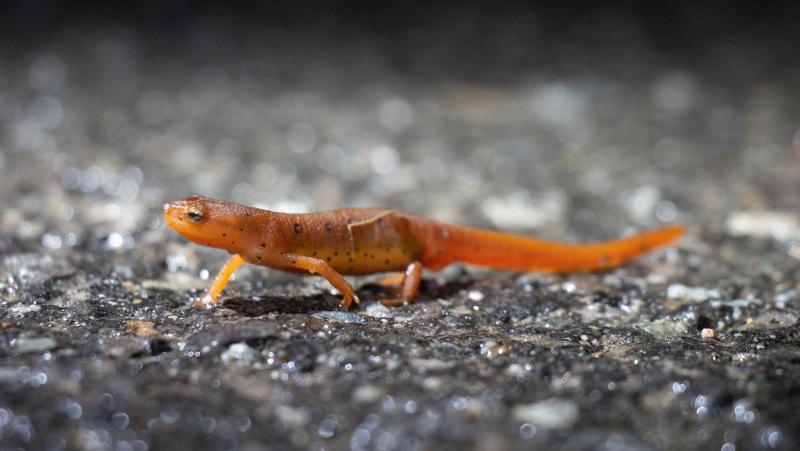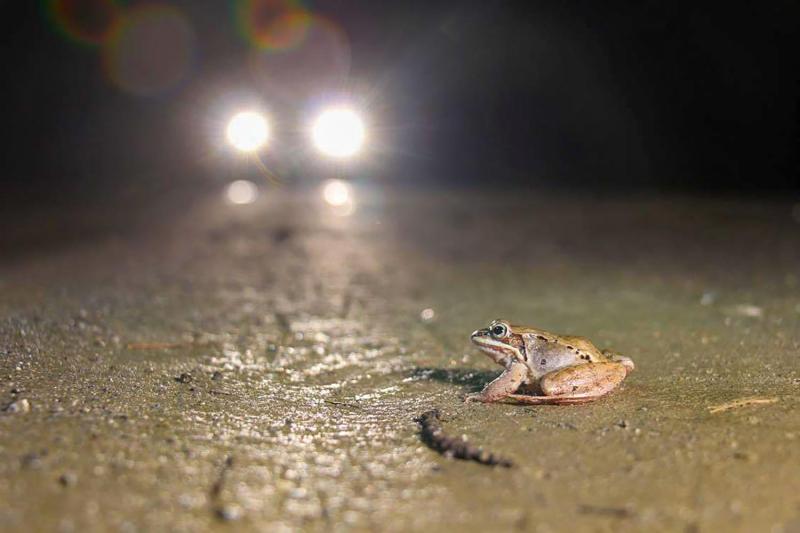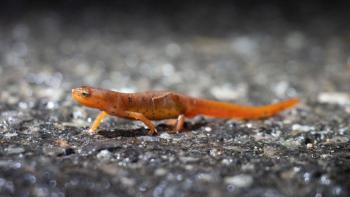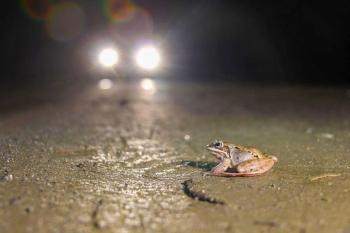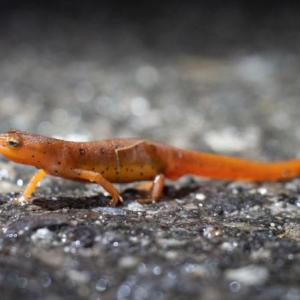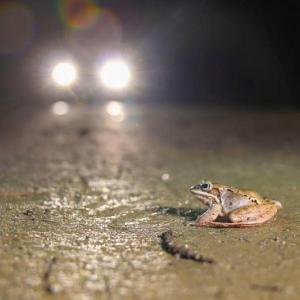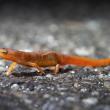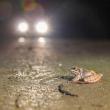Spring into science with 2024 return of Maine Big Night
University of Maine researchers are encouraging folks to get outside and help document one of nature’s great migrations this spring.
Maine Big Night, a community science nonprofit founded by UMaine Ph.D. candidate Greg LeClair calls on Mainers to brave the dark and muck to find frogs and salamanders that are on the move, and where they are most vulnerable to human infrastructure. Since 2018, the small but mighty community science project has recorded more than 21,000 amphibians at 349 locations that span Maine from Kittery to Fort Kent.
Joining Maine Big Night is free and volunteers are encouraged to sign up online. Those who wish to adopt a monitoring site must complete an online training and pass a certification quiz. Volunteers may join a certified person’s monitoring site without additional training.
Amphibians love to lurk under leaves and logs where they are difficult to find. The project capitalizes on their behavior during big nights, which are vital to frogs’ and amphibians’ cycles. Each spring as the ground thaws and the nighttime air temperatures climb to the forties, the patter of rain lures Maine’s amphibians from their winter quarters. On a given night, legions hop and crawl over great distances to congregate in their watery breeding grounds. Relative to its body size, a wood frog’s journey is 13 times greater than the widely broadcast trek made by wildebeests.
The annual Maine Big Night usually happens in mid-April. As with other signs of spring, the amphibians seem to be moving early this year.
“We're at least two weeks ahead of where we usually are this year, likely due to El Nino with a hint of climate change,” said LeClair, who is studying ecology and environmental sciences.
The migration is perilous for the diminutive creatures, especially when they face human infrastructure. With one thing on their minds and no regard for the rules of the road, frogs and salamanders suffer high mortality rates when their routes intersect with where cars travel.
“It doesn't take many cars to cause a major problem. One in 10 spotted salamanders getting hit may be enough to cause localized extinction. Roads might as well be mountain ranges in some cases; some are so impassable that a population on one side of a highway may be genetically different from one on the other side of the highway, even here in Maine,” said LeClair, who is advised by Michael Kinnison, professor of evolutionary applications, and Matthew Chatfield, assistant professor of evolution and eco-health at UMaine’s School of Biology and Ecology. Kinnison also directs the Maine Center for Genetics and the Environment.
LeClair says he founded the project to identify high-risk areas which, in turn, hones conservation strategies to ultimately create safer passages for Maine’s migrating amphibians. The animals are vital members of the state’s wetland ecosystems, and big nights are a boon for predators seeking a much-needed energy boost after a long winter.
For LeClair, learning where frogs and salamanders slog during their big nights is just the beginning. Collecting additional data during Maine Big Night supports future research into species distribution trends, disease monitoring and predictors of road mortality hotspots. In 2021, LeClair and his colleagues published a study that found fewer frogs died by vehicles during the outset of the COVID-19 pandemic in spring 2020.
“Now that we are amassing a large set of data with some clear trends emerging, we need funding and political will to get wildlife crossings in place,” he says. “Once these structures are established, they will likely benefit not only frogs and salamanders, but many other species for far longer than our volunteer season. This couldn't come any sooner for wildlife adjusting to the changing conditions of the planet.”
LeClair received the National Conservation Young Leader Award from the National Wildlife Federation and a Brookie Award from the Natural Resource Council of Maine for his work on Maine Big Night.
As Maine’s only public research university and a Carnegie R1 top-tier research institution, the University of Maine advances learning and discovery through excellence and innovation. Founded in 1865 in Orono, UMaine is the state’s land, sea and space grant university with a regional campus at the University of Maine at Machias. Our students come from all over the world and work with faculty conducting fieldwork around the globe — from the North Atlantic to the Antarctic. Located on Marsh Island in the homeland of the Penobscot Nation with UMaine Machias located in the homeland of the Passamaquoddy Nation, UMaine’s statewide mission is to foster an environment that creates tomorrow’s leaders. As the state’s flagship institution, UMaine offers nearly 200 degree programs through which students can earn bachelor’s, master’s, professional master’s and doctoral degrees as well as graduate certificates. For more information about UMaine and UMaine Machias, visit umaine.edu/about/quick-facts/ and machias.edu/about-umm/umm-facts/.

